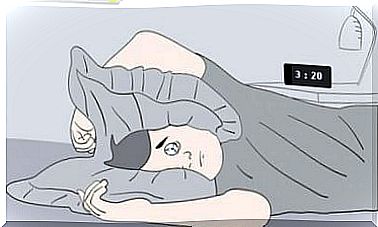7 Techniques Of Operant Conditioning For Change

Change, both in therapy and from day to day, can be precipitated by very different variations. Our behavior is also what it is because of a cluster of more or less relevant variables : our own personal history, our baggage, our abilities or the rewards that we want to obtain from that behavior (operant conditioning).
First Thorndike, with his differential psychology, followed by Pavlov and his classical conditioning, to get to Skinner and his operant conditioning, reinforcements and punishments in the behavior of the individual are relevant fields of study for experimental psychology.
From them, and defended by behavioral models, operant conditioning is postulated as a type of learning in which the person would act according to the anticipated consequences, that is, we would speak of the product of a learning history. Today we know that behaviors that are followed by reinforcement are more likely than those that are followed by punishment.

Positive and negative reinforcement: operant conditioning techniques
Based on operant conditioning, there are two types of reinforcement that can follow a behavior:
- Positive reinforcement: that reinforcement that adds something after the behavior is emitted. For example, when a child cleans his room, a parent may give him a bag of sweets.
- Negative reinforcement : it arises when a stimulus that is aversive for the person is withdrawn. Removing something unpleasant is also a reinforcement, and it differs from positive reinforcement in that the former adds something, while the negative subtracts something.
Positive and negative punishment in operant conditioning
Unlike reinforcement, which makes a behavior more likely to be repeated if it occurs, punishment achieves the opposite. If it is administered after a behavior has been issued, that behavior will be less likely to occur again; In other words, it will tend to die out. There are also two types of punishment:
- Positive punishment : again, one that adds something. We would speak, for example, of the imposition of a sanction (Eg: volunteer work for the community).
- Negative punishment : one who suppresses or withdraws something. We would speak, for example, of the withdrawal of a privilege (Ex: driving due to loss of points).
Through reinforcements and punishments, among other things, behavior can be influenced – this is known to all parents, whether they have studied psychology or not. The way to administer a reinforcement, a well-developed stimulation control, its environment, its motivation … are variables that must be taken into account.
However, a list of techniques derived from these mechanisms of operant conditioning is presented that may be useful to modify unwanted or inappropriate behaviors depending on the contexts.
Techniques of operant conditioning based on negative punishment
- Response cost : reinforcers are removed when inappropriate behavior is issued and returned when the alternative behavior that we want to learn occurs. It is important to get hold of several reinforcers at the beginning and avoid the negative balance at all costs (that a child does not run out of all his reinforcers and therefore does not care, or that he takes so long without them that they stop working as reinforcement for him) .
- Time out: when the reinforcements of the environment cannot be controlled, and the person continues to receive their reinforcers despite emitting inappropriate behavior, the individual can be removed from the reinforcing environment. If the individual is a child, it is important to allow adequate time out.
Techniques based on positive punishment
Satiation
It consists of providing reinforcers indiscriminately until the individual is satiated. There are two types of satiation, response and behavior. The response approach works in a massive way with reinforcers, while the behavioral approach focuses on the behavior that you want to alter.
An example of response satiation is the massive emission of reinforcers so that they stop constituting themselves as reinforcers of that behavior. One person yells at another to leave him alone. A satisfying response would be to leave him alone for a long time, not just the one he seeks.
Overcorrection
It is intended that the individual pay for the consequences of their actions. There is the restorative overcorrection, in which, for example, the child has to pick up all the toys that he has taken out of the box; also the positive practice overcorrection, in which if the person quitting smoking has tried tobacco, they are told that they have to carry out some action as penance for that cigarette.

Differential reinforcement techniques
They are used when the objective of the reinforcement and punishment program is not the suppression of a behavior, but it is desired to modify the frequency. We found three non-mutually exclusive techniques that use the reinforcement of operant conditioning:
- Differential reinforcement of low rates : this technique is intended to lower the frequency of a behavior, thus it will be reinforced only when it occurs at low rates. If it appears at high rates, the individual will not receive the enhancer. For example, a girl who asks too many questions in class and raises her hand a lot, not allowing others to participate. When the girl raises her hand twenty-five times in a class, she will not receive that reinforcement. However, if the girl lifts it only ten, it will begin to strengthen until it reaches the ideal number.
- Differential reinforcement of other behaviors : following the same example, another way to space the behavior is to reinforce behaviors other than raising the hand. If instead of interrupting the class that girl is doing her homework or solving a mathematical operation, these types of different behaviors can be reinforced. It seeks to increase the probability and frequency of them.
- Differential reinforcement of incompatible behaviors: it seeks to reinforce behaviors that are incompatible to carry out at the same time as the one to be modified. For example, if a child bites his nails, behaviors such as having a pen in his hand or hiding his hands in his pockets can be reinforced.
Above all, reinforcement programs must be carried out in an appropriate, efficient, intelligent and responsible manner. The objectives to be achieved must be clear and the action plan as well.
Let us think that in many cases the person will present resistance to comply with the plan that we propose, they will want the reinforcement regardless of what has been agreed. Hence, patience, social skills, subtlety and precision are also necessary to mark the times.









